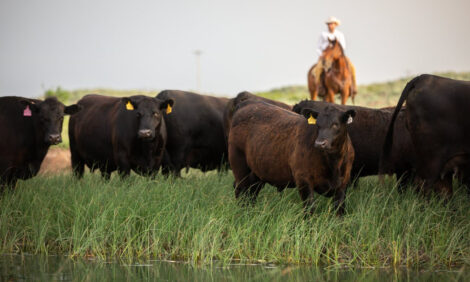



Health And Welfare Of Cattle Transported In Late Pregnancy
The number of pregnant cattle that are being transported long distances is increasing, which is why the Veterinary Laboratory Agency has put together a leaflet on statutory requirements and risk advice for transportation of cows in late pregnancy.Since July 2009 the Veterinary Laboratories Agency (VLA) has investigated the deaths of dairy heifers transported from Europe in late pregnancy. They died from severe metabolic disease within six weeks of transport, with fatty liver being the most common feature.
Further cases have included death and dehydration of pregnant heifers during transport. Metabolic disease only occurs in certain batches of heifers transported in late pregnancy, possibly associated with animals in very good or over-fat condition at calving. However, while thousands of cattle are regularly transported without apparent incident, it is recommended that pregnant cattle, and in particular heifers, should be carefully managed before, during and after long journeys.
Since 2008 Animal Health has reported a number of incidents of cattle calving during or just after transportation, contrary to current EU regulations.
There are significant risks to the health and welfare of heifers and cows transported over long distances in late pregnancy. The risk may be greater in heifers because they tend to have a shorter pregnancy and because more of them are transported when pregnant (the number of imported dairy heifers has increased in the past two years). Additionally, since most pregnant heifers are physically immature during pregnancy they may be more susceptible to the stress of long distance transport.
Farmers (both vendors and purchasers) and hauliers must be aware of these risks, take action to mitigate them, and be aware of their statutory obligations. Council Regulation EC/1/2005 lays down the provisions on the protection of animals during transport.
This is enforced in England under The Welfare of Animals (Transport) (England) Order 2006, and states that pregnant females should NOT be transported when 90 per cent or more of the expected pregnancy period has passed, or in the week after calving.
Important factors to consider when transporting pregnant cattle
Energy and water requirements increase considerably in late pregnancy. Evidence indicates some heifers experience significant negative energy balance during transport, while others suffer from dehydration.
There may be an interruption in food and water intake (even if it is provided to the animals) during transport, particularly on long journeys.
A significant change in dietary management in late pregnancy is more likely to lead to metabolic disease. In some cases, heifers reared indoors at the source farm were put out to grass at the destination farm.
The stress of transportation may intensify these problems and lower animals’ resistance to disease.
The law on transportation
It is an offence to transport any animal in a way which causes it, or is likely to cause it, injury or unnecessary suffering. Transporters and keepers can be prosecuted if they flout the law. In addition, animals which are unfit must not be transported. This includes pregnant dairy cattle transported in the final 10 per cent of their gestation period (with the exception of transportation for veterinary treatment), and in the week following calving.
In addition, under the Animal Welfare Act 2006, animal owners and keepers of animals have a duty of care to provide for their basic needs and to prevent suffering. Someone responsible for an animal, who permits another person to cause unnecessary suffering, is also committing an offence.
This is also the case if they fail to take reasonable steps to prevent suffering during and after transport. Intra-Community Trade Animal Health Certificates clearly state the requirements for compliance with the European Transport Regulation EC/1/2005.
Best practice and recommended actions
Whilst there are legal limitations regarding the transportation of pregnant cattle in the final 10 per cent of gestation, there are increased risks to cattle health and welfare throughout pregnancy. Therefore the journey must be planned and managed to reduce these risks and to ensure that their metabolic requirements will be fully met.
Check exact insemination or service date and expected calving date for each animal in the batch.
Avoid negative energy balance in late pregnancy by ensuring appropriate feeding before, during and after transport.
Avoid sudden changes of management and diet for pregnant animals. Upon arrival at the farm of destination, heifers should initially remain on the same diet as before transportation and new foods should be introduced gradually.
It is recommended that pregnant cattle are not transported over long distances in the last two months of pregnancy. This will also allow the animal to adapt to new rearing conditions before calving.
Always consider the disease status of new animals introduced in any herd. This is especially important if the animals originate from abroad because they may carry diseases that are not already present in GB. The biosecurity of the herd of destination should be managed through a herd health plan.


